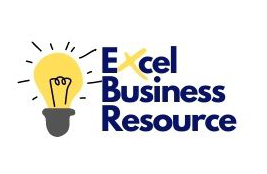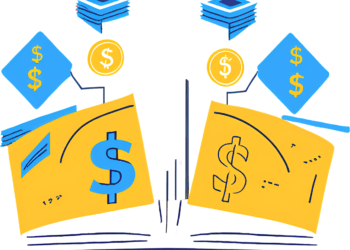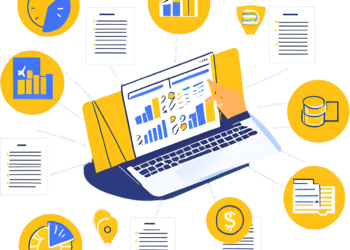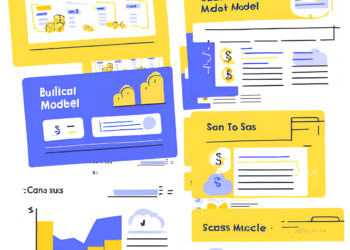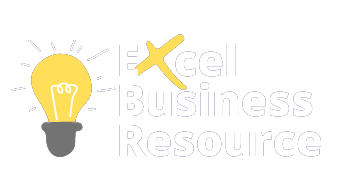The Tremendous Importance of Financial Model for Startup Success


Table of Contents
A financial model for startup is a crucial tool for any entrepreneur seeking to start a new business or secure funding for an existing one. This financial model template for startup is essentially a projection of the company’s future financial performance, based on a variety of assumptions about revenue, expenses, cash flow, and capital expenditures.
What Is Financial Modeling?
The startup financial modeling and forecasting is typically created in a spreadsheet called excel modeling, and it should include several key components.
These components include revenue projections, cost of goods sold, operating expenses, capital expenditures, sensitivity analysis, KPIs, and cash flow projections. There are several Financial Modeling Software available online, but now let’s take a closer look at each of these components.
Revenue projections:
This component is perhaps the most important part of any financial model for the startup. It involves estimating how much revenue the company will generate over a certain period, typically the next three to five years. Revenue projections should be based on a variety of factors, including market research, industry trends, and the company’s growth trajectory.
Cost of goods sold:
This component involves estimating the cost of producing or acquiring the products or services that the company will sell. This includes direct costs such as materials and labor, as well as indirect costs such as shipping and overhead.
Operating expenses:
This component involves estimating the company’s ongoing expenses, such as rent, utilities, salaries, and marketing expenses. These expenses are typically divided into fixed and variable costs.
Capital expenditures:
This component involves estimating the amount of money the company will need to invest in assets such as equipment, inventory, and facilities. This may also include investments in intellectual property, research and development, and other intangible assets.
Cash flow projections:
This component involves estimating the company’s cash inflows and outflows over a certain period. This is important because it helps to ensure that the company has enough cash on hand to cover its expenses and invest in growth opportunities.
Overall, a startup’s financial modeling and forecasting is an essential tool for any entrepreneur seeking to start or grow a business. By creating a detailed projection of the company’s financial performance, entrepreneurs can make informed decisions about how to allocate resources and pursue growth opportunities. Additionally, a well-crafted financial model can be a powerful tool for securing funding from investors or lenders, as it demonstrates a clear understanding of the company’s financial position and growth potential.
5 Compelling Reasons to Craft a Financial Forecasting Model for Your Startup's Triumph
Building a financial forecasting model in Excel is a critical aspect of any startup’s success. Here are some of the reasons importance of startup financial forecasting:
Helps With Fundraising:
Financial models are essential tools for convincing investors to invest in your startup. A well-designed model provides investors with a clear understanding of your business plan and your financial projections.
Facilitates Decision Making:
Financial forecasting allows you to simulate different scenarios and make informed decisions. For instance, you can model the impact of changing prices or volumes or the effect of new hires on your revenue and expenses.
Aids in budgeting:
A financial model can help you plan and budget for the future. By forecasting revenue and expenses, you can estimate cash flow needs and plan accordingly.
Provides Insights Into Profitability:
A financial projection model can help you determine the breakeven point for your startup and identify potential areas for improvement. By analyzing your cost structure, you can identify ways to reduce costs and improve your profitability.
Tracks Progress:
The financial model provides a means to track progress against your projections. By comparing your actual financial results to your model, you can identify areas where you are underperforming and take corrective action.
In summary, financial modeling is an essential tool for any startup that wants to succeed. It can help you plan and budget for the future, make informed decisions, and convince investors to invest in your business.
What is Financial Model Template?
A financial model template is a pre-designed framework that startups can use as a starting point to build their financial model. These templates typically include pre-designed financial statements, assumptions, formulas, and other features that can help startups create a financial model quickly and easily.
However, a good financial model is dynamic, automated, customized, and has proper linking with each sheet. Similarly, a good financial model is one, in which the entrepreneur only changes the variable, and the whole financial model updates instantly.
Most importantly, the Industry has different kinds of revenue models, assumptions, cost, capitalization, and inputs, so they have different financial models too. Therefore it is very imperative to use your industry-friendly and tailored financial model. Customized and tailored financial model templates can save startups a significant amount of time and effort.
Here are some of the most common financial forecasting templates used by startups:
-
- Simple financial model template: This template also called three statement financial model includes a basic income statement, balance sheet, and cash flow statement, along with simple assumptions for revenue, expenses, and capital expenditures.
- SaaS financial model template: This template is designed for startups in the software-as-a-service (SaaS) industry and includes specific assumptions for customer acquisition, customer churn, monthly recurring revenue, and other key metrics.
- E-commerce financial model template: This template is designed for startups in the e-commerce industry and includes specific assumptions for website traffic, conversion rates, average order value, and other key metrics.
- Real estate financial model template: This template is designed for startups in the real estate industry and includes specific assumptions for property acquisition costs, rental income, property management expenses, and other key metrics.
- Startup financial model template: This template is a general-purpose financial model template that includes basic financial statements and assumptions, making it suitable for startups in any industry.
To build a financial projections: you will need to follow these steps:
-
- Define the purpose and scope of the model.
- Gather data and information on the variables you want to include in the model.
- Organize the data and input it into a spreadsheet.
- Develop assumptions and forecast future performance.
- Create formulas and link the different components of the model.
- Test and validate the model using historical data and real-world scenarios.
- Document the model and provide clear explanations of the assumptions, formulas, and inputs.
- Use the model to make informed decisions and adjust it as necessary based on actual performance and new information.
Building financial forecasting can be complex, and it’s important to have a solid understanding of finance and accounting principles to create an accurate and reliable model.
Examples of Heartfelt Financial Forecasting Models
There are different types of financial models, and the type of model you choose to build will depend on your specific needs and goals. Here are some common types of financial models:
-
- Sales forecasting financial model: A sales forecast model projects future sales revenue based on historical data, market trends, and other relevant factors. This model can help businesses plan their budgets, set sales targets, and make informed decisions about pricing and marketing strategies.
-
- DCF financial model: A discounted cash flow (DCF) model is used to estimate the value of an investment based on its future cash flows. This model takes into account factors such as the time value of money, discount rates, and growth rates, to determine the present value of future cash flows.
-
- M&A financial model: A merger and acquisition (M&A) model is used to evaluate the financial impact of a potential merger or acquisition. This model takes into account factors such as the purchase price, financing options, and synergies between the two companies, to determine the potential financial benefits and risks of the deal.
-
- Budget financial model: A budget model is used to plan and track expenses over a specific time. This model takes into account factors such as revenue, operating expenses, and capital expenditures, to help businesses make informed decisions about spending and resource allocation.
- Sensitivity analysis model: A sensitivity analysis model is used to test the impact of changes in key assumptions on the financial performance of a business. This model can help businesses to identify potential risks and opportunities and make informed decisions about their strategies and investments.
11 Essential Elements Of Financial Model For Startup
- Key Assumptions: A startup’s financial model should include a set of key assumptions that underpin the financial projections. These assumptions may include things like revenue growth rates, pricing, cost of goods sold, and capital expenditures.
- Revenue/Sales Forecasting: A revenue forecast is a critical component of a financial model. This should include a breakdown of the different revenue streams and the assumptions underlying the forecast.
- Income Statement (P&L Statement): The income statement shows the company’s revenue, expenses, and net income over a specific period. It is a key component of a financial model and provides insights into the company’s profitability.
- Cash Flow Statement: A cash flow statement shows the company’s cash inflows and outflows over a specific period. It is a critical component of a financial model as it provides insights into the company’s liquidity and cash management.
- Balance Sheet: The balance sheet shows the company’s assets, liabilities, and equity at a specific point in time. It is a critical component of a financial model as it provides insights into the company’s financial health.
- Dashboard: A financial model dashboard provides a summary of the key financial metrics, KPIs, and other important data. It is an essential tool for management to monitor the company’s financial performance.
- Scenario or Variance Analysis: Scenario or variance analysis is used to model the impact of different scenarios or assumptions on financial projections. This is a critical component of a financial model as it allows management to understand the sensitivity of the financial projections to different variables.
- KPIs: Key performance indicators (KPIs) are metrics that are used to monitor the company’s performance. A financial model should include a set of KPIs that are relevant to the business and provide insights into the company’s financial health.
- Debt Schedule: A debt schedule shows the company’s debt and interest payments over time. It is a critical component of a financial forecasting for companies that have taken on debt.
- Working Capital Sheet (A/R, A/P, Inventory ): The working capital sheet shows the company’s current assets and liabilities. This is a critical component of a financial model as it provides insights into the company’s liquidity and ability to meet its short-term obligations.
- Depreciation & Amortization: Depreciation and amortization are non-cash expenses that are included in the income statement. They are important components of a financial model as they affect the company’s net income and cash flow.
10 Most Empowering Financial Modeling Software Solutions
There are many financial modeling software programs available, each with its strengths and weaknesses. Here are ten of the most popular financial modeling software programs:
-
- Microsoft Excel Modeling: Excel is spreadsheet software widely used in financial modeling due to its flexibility, versatility, and powerful data analysis capabilities.
- Oracle Hyperion: Hyperion is financial management software that enables businesses to streamline financial consolidation and reporting, and optimize financial performance management.
- Tableau: Tableau is data visualization software that allows users to create interactive dashboards, charts, and graphs to help make data-driven financial decisions.
- Domo: Domo is cloud-based software that offers real-time insights and data visualization features for businesses. It includes financial data integration, forecasting, and planning tools.
- Anaplan: Anaplan is cloud-based business planning and performance management software that offers real-time data integration, scenario analysis, and forecasting capabilities.
- QuickBooks: QuickBooks is accounting software widely used by small businesses to manage their finances, including financial statements, inventory management, and invoicing.
- Adaptive Insights: Adaptive Insights is cloud-based software that offers financial planning, forecasting, and reporting features, and integrates with many other software systems.
- Xero: Xero is online accounting software widely used by small businesses that offer invoices, bank reconciliation, payroll, and expense tracking features.
- SAP Business Planning and Consolidation: SAP BPC is a software solution that enables businesses to plan, budget, forecast, and consolidate their financial data.
- Palantir: Palantir is data analytics software that allows businesses to manage their financial data, predict outcomes, and optimize performance.
These software programs are widely used by businesses to create financial models and support financial decision-making. However, it’s important to select the software that best meets the specific needs of your business.
What Investor Likes In Financial Forecasting Model
Investors typically look for several key elements in a financial model presented by a startup. Here are some of the most important elements:
-
- Realistic and well-supported assumptions: Investors want to see that the assumptions underlying the financial projections are reasonable and supported by market research or other relevant data.
- Clear and comprehensive revenue projections: Investors want to see that the startup has a clear plan for generating revenue and that the revenue projections are realistic.
- Detailed expense projections: Investors want to see that the startup has considered all of the expenses associated with running the business and that the expense projections are detailed and comprehensive.
- Cash flow projections: Investors want to see that the startup has a clear plan for managing its cash flow and that the cash flow projections are realistic and well-supported.
- Sensitivity analysis: Investors want to see that the startup has considered different scenarios and that the financial model includes a sensitivity analysis that shows the impact of different variables on the financial projections.
- Realistic valuation: Investors want to see that the startup has a realistic valuation that is based on financial projections and other relevant factors.
- Professional presentation: Investors want to see that the financial model is presented professionally and that the startup has taken the time to ensure that the model is clear, concise, and easy to understand.
By including these key elements in the financial model, startups can demonstrate to investors that they have a clear plan for generating revenue, managing expenses, and achieving long-term financial success.
-
What is Rule of 40 in SaaS? A Guide to Balancing Growth and Profitability
The SaaS industry is a battlefield where growth and profitability often pull businesses in opposite directions. As a founder or leader, you’ve likely asked yourself, should I focus on scaling faster or turning a profit? It’s a tough call. One wrong move and you risk burning cash too quickly or losing your competitive edge.Here’s the
January 27, 2025 Read more -
Pre-Money vs Post-Money Valuation: Understand Startup Funding like a Pro
You’re pitching to a group of venture capitalists, excited about the prospect of raising capital to launch your dream company. They ask you, “What’s your valuation? Suddenly, you’re faced with questions about ownership percentages, equity stakes, and terms you may not fully understand. Perhaps the most frequent pitfall facing founders is the understanding of pre
January 27, 2025 Read more -
How to Increase Profitability in a Coworking Space Business
Running a coworking space is an exciting journey but making it profitable is not always easy. While you’ve created the space for freelancers, startups, and remote workers to thrive, balancing operational costs, member retention and revenue generation feels like juggling too many balls at once. What’s worse? You may be stretched thin with your human
January 21, 2025 Read more -
Why Capital Efficiency Important for SaaS Growth & Valuation
You have built an amazing SaaS product. The customers are signing up, and your team is growing, and everything is going great, but when you scale, you find that the cash flow is starting to dry out. The revenues aren’t supporting your expenses anymore, and the investors are losing interest. It is a nightmare scenario
January 13, 2025 Read more -
Key KPIs to Evaluate Solar Energy Power Projects
You had invested millions of dollars in a solar energy project, which promised clean energy and high returns. But months have passed since, and you’re still far from what you’d expected – low output, cost spiraling out of control, and equipment failure. This is one of the biggest challenges in the solar energy industry. While
January 13, 2025 Read more -
Top KPIs for Measuring Success in Coworking Space Business
Managing a coworking space without proper planning is like driving a car blindfolded. The reliance on manual scheduling and guesswork often results in wasted time, inefficiency, and frustration. But there’s good news data-driven metrics, or Key Performance Indicators (KPIs), can provide a clear roadmap to success. For coworking space operators, KPIs aren’t just numbers; they’re
January 9, 2025 Read more -
How Do Venture Capitalists (VCs) Valuate the TAM of a Startup?
When VCs analyze a startup opportunity, they often rely on a detailed financial model to evaluate growth potential and overall economic prospects. The first step VCs take is to find the TAM of a startup. TAM defines the total market size, which offers a good understanding of the startup’s potential to gain a share in
January 7, 2025 Read more -
What is the First Chicago Method for Startup Valuation?
Startup valuation is one of the most critical aspects for founders and investors when raising or investing money. Accurately valuing a startup isn’t just about the numbers, but it is about understanding the potential of an idea and balancing the risks involved. One valuation technique that stands out is the First Chicago Method, often used
January 7, 2025 Read more -
How Much Does It Cost to Build a Solar Power Plant and Its Expected Timeline for Profitability?
Solar power plants have emerged as a cornerstone of the renewable energy revolution, playing a pivotal role in combating climate change and fostering energy independence. With the global demand for clean and sustainable energy solutions surging, businesses, governments, and environmental advocates are increasingly prioritizing investments in solar technology. These investments aim to achieve ambitious sustainability
December 22, 2024 Read more -
How to Do Startup Valuation Using 8 Different Methods
How do I do startup valuation? How venture capitalists (VCs) value my startup? Because if I able to understand VC valuation methods, I will understand the VC mind. What valuation method would be best to use for my startup at particular stage of startup? How do to valuation of pre-revenue startup? Almost all founders must
December 15, 2024 Read more -
Why EBITDA is Important for Startup Valuation
What is EBITDA? EBITDA stands for Earnings Before Interest, Taxes, Depreciation, and Amortization. It is a key financial metric used to evaluate a company’s operating performance, excluding non-operational and non-cash expenses. By stripping out these elements, EBITDA offers a clearer picture of a business’s profitability from its core operations. For startups, where operational efficiency often
December 11, 2024 Read more -
How to Build SaaS Financial Model Template
Building a SaaS financial model template is essential for understanding the economic health and growth potential of a SaaS startups. These excel based models are designed to provide detailed insights into key metrics, enabling founders and decision-makers to make data-driven decisions that forecast revenue, optimize performance, analyze CAC, secure funding, and drive scalability. In this
December 9, 2024 Read more
-
What is Rule of 40 in SaaS? A Guide to Balancing Growth and Profitability
The SaaS industry is a battlefield where growth and profitability often pull businesses in opposite directions. As a founder or leader, you’ve likely asked yourself, should I focus on scaling faster or turning a profit? It’s a tough call. One wrong move and you risk burning cash too quickly or losing your competitive edge.Here’s the
January 27, 2025 Read more -
Pre-Money vs Post-Money Valuation: Understand Startup Funding like a Pro
You’re pitching to a group of venture capitalists, excited about the prospect of raising capital to launch your dream company. They ask you, “What’s your valuation? Suddenly, you’re faced with questions about ownership percentages, equity stakes, and terms you may not fully understand. Perhaps the most frequent pitfall facing founders is the understanding of pre
January 27, 2025 Read more -
How to Increase Profitability in a Coworking Space Business
Running a coworking space is an exciting journey but making it profitable is not always easy. While you’ve created the space for freelancers, startups, and remote workers to thrive, balancing operational costs, member retention and revenue generation feels like juggling too many balls at once. What’s worse? You may be stretched thin with your human
January 21, 2025 Read more
-
What is Rule of 40 in SaaS? A Guide to Balancing Growth and Profitability
The SaaS industry is a battlefield where growth and profitability often pull businesses in opposite directions. As a founder or leader, you’ve likely asked yourself, should I focus on scaling faster or turning a profit? It’s a tough call. One wrong move and you risk burning cash too quickly or losing your competitive edge.Here’s the
January 27, 2025 Read more -
Pre-Money vs Post-Money Valuation: Understand Startup Funding like a Pro
You’re pitching to a group of venture capitalists, excited about the prospect of raising capital to launch your dream company. They ask you, “What’s your valuation? Suddenly, you’re faced with questions about ownership percentages, equity stakes, and terms you may not fully understand. Perhaps the most frequent pitfall facing founders is the understanding of pre
January 27, 2025 Read more -
How to Increase Profitability in a Coworking Space Business
Running a coworking space is an exciting journey but making it profitable is not always easy. While you’ve created the space for freelancers, startups, and remote workers to thrive, balancing operational costs, member retention and revenue generation feels like juggling too many balls at once. What’s worse? You may be stretched thin with your human
January 21, 2025 Read more -
Why Capital Efficiency Important for SaaS Growth & Valuation
You have built an amazing SaaS product. The customers are signing up, and your team is growing, and everything is going great, but when you scale, you find that the cash flow is starting to dry out. The revenues aren’t supporting your expenses anymore, and the investors are losing interest. It is a nightmare scenario
January 13, 2025 Read more
Services
Company
Join our NewsLetter
Join our newsletter for the latest updates, exclusive content, and more. Enter your email below and never miss out!
